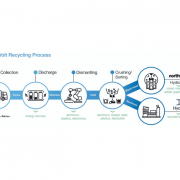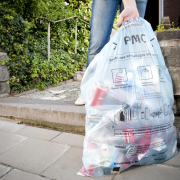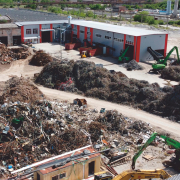USA: National Framework for Advancing the Recycling System
The National Framework for Advancing the U.S. Recycling System, released in November 2019, is the product of a multi-stakeholder collaborative effort that began one year earlier.
As reported, in November 2018 the Environmental Protection Agency (EPA) hosted the first America Recycles Day Summit, which brought together stakeholders from across the U.S. recycling system to join the agency in signing the America Recycles Pledge. “Participants included representatives from federal, local, state and tribal governments; the recycling industry; non-profits; manufacturers; and product brands, who worked collaboratively over the course of 2019,” EPA informed. “All 45 signing organizations, including EPA, pledged to work together to identify specific actions to take in addressing the challenges and opportunities facing the U.S. recycling system.” In November 2019, the total number of pledge signers had grown to more than 165 and in December to 195. Through the pledge, organizations committed to leveraging their collective expertise, strengths and resources to address these challenges and opportunities. Workgroups were formed to address four critical areas for action: promoting education and outreach, enhancing materials management infrastructure, strengthening secondary materials markets and enhancing measurement. “These action areas have been continually underscored and reaffirmed as the primary areas of need to address the challenges facing our recycling system.”
The national importance of recycling
“Recycling is an important driver of the United States’ economy and a way to conserve our resources and protect the environment,” EPA wrote in the executive summary of the national framework document. The U.S. Environmental Protection Agency’s “Recycling Economic Information Report” had found that, in a single year, recycling and reuse activities in the country accounted for 757,000 jobs, 36.6 billion US-Dollar in wages and 6.7 billion US-Dollar in tax revenues. As emphasized, this would equate to 1.57 jobs, 76,000 US-Dollar in wages and 14,101 US-Dollar in tax revenues for every 1,000 tons of material recycled. Besides, recyclable materials with a commodity value of approximately 8.9 billion US-Dollar were sent to landfills annually.
“Recycling also reduces the amount of waste sent to landfills and incinerators; conserves natural resources such as timber, water and minerals; and reduces pollution sources by reducing the need to extract new raw materials. While the benefits of recycling are clear, growing and strengthening the U.S. recycling system to support domestic industries and enhance environmental and community benefits will require multi-stakeholder collaboration to address the challenges currently facing the system,” the Environmental Protection Agency underlined. According to the information, the challenges include:
- Confusion about what materials can be recycled, which often leads to placing recyclables in the trash or throwing trash in the recycling bin or cart;
- Outdated recycling infrastructure that is ill-equipped to keep pace with today’s diverse and changing waste stream;
- Reduced export markets for recycled materials, requiring domestic markets to be strengthened;
- Varying methodologies to measure recycling system performance used across the country make it difficult to create effective goals and track progress.
“This National Framework for Advancing the U.S. Recycling System is an initial step toward defining and addressing the complex challenges facing the U.S. recycling system,” EPA stated. To shift the system, it “will take a network of federal, state, local and tribal governments, manufacturers, brands, non-profit organizations, recycling industry associations, and waste management companies”. To assist these efforts, EPA would continue to serve in its role as a convener and facilitator of the America Recycles network efforts.
www.epa.gov/sites/production/files/2019-11/documents/national_framework.pdf
(GR12020, Page 39, Photo: qphotomania / stock.adobe.com)








